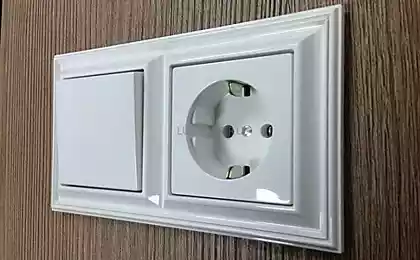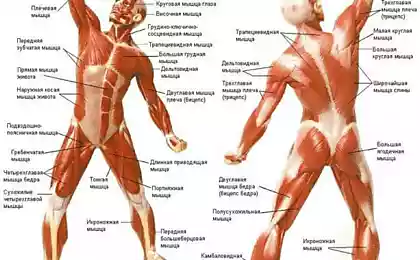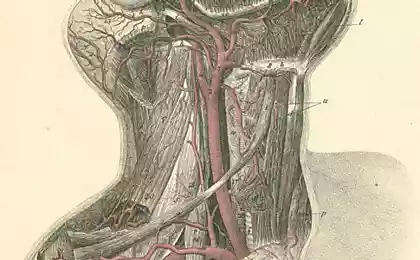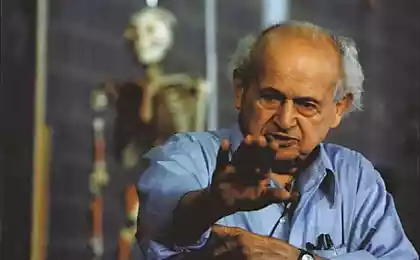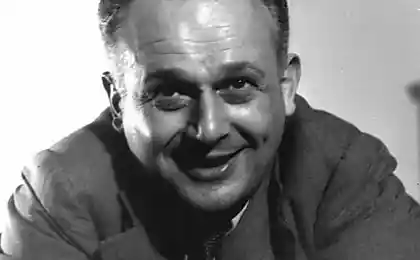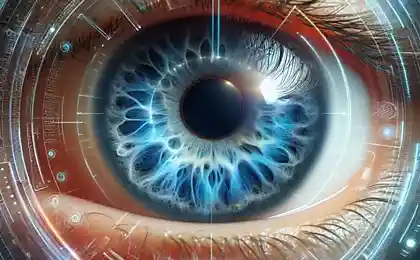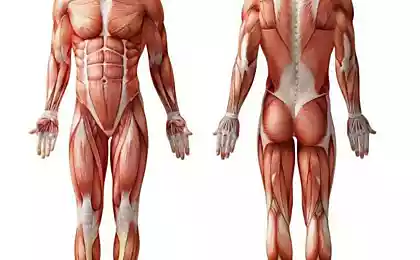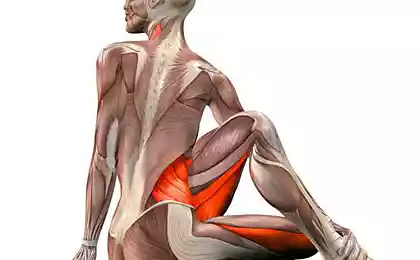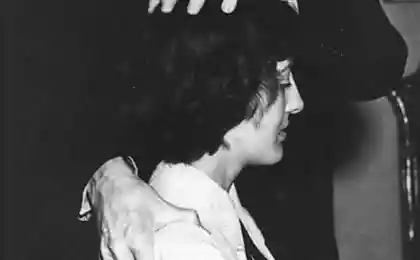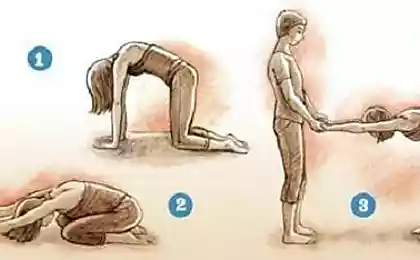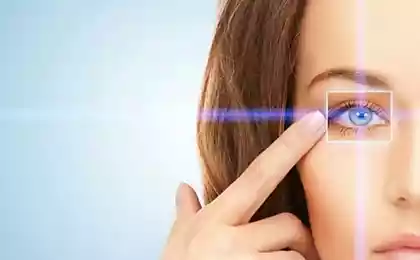623
Unique the Feldenkrais method for relieving chronic tension in eyes, neck, shoulders and back
The Feldenkrais method and healthy visionIn obtaining information about the world around us, we depend on sight more than any other of the senses.
In order to maintain healthy vision, our eyes must use all possible range: from near to far, however, in today's world most of the time we focusareas on objects located up close, for example, we use near vision when reading, watching television, using computer monitors and working with technology. The predominant use of close vision is one of the main causes of chronic eye strain, neck, shoulders and back.

The following simple exercise will help you to understand the tension and will reduce eye strain. Since there is a close relationship between eye strain, the tone of the neck muscles and condition your entire body, you will soon make sure that the relaxation of the eyes is also accompanied by the release of tension from the face, neck and shoulders.
The following movements can be performed sitting or lying down. Basic guidelines to follow:do not rush, every action carefully to do (need to do small and light), try to relax and after each movement to relax a bit. Better to do this lesson reading about one movement at a time and then performing it with your eyes closed. Or ask someone to read the text for you. If you wear lenses or glasses, remove them before the lesson.
1. Close your eyes. Imagine that you see a round ball in the distance on the horizon in front of you. Select color and bulb size. It will look something like this:

2. Imagine the ball very slowly moved slightly to the right and then left along the horizon. Close your eyes and move your eyes from side to side, following the ball in your imagination. Repeat each movement 4-8 times

Do not strain the eyes. Move your eyes very slowly. Each movement must be small and light. Breathe freely. Your eyes are likely to move unevenly. The ball seems to be to jump or you can keep an eye on it from time to time.
3. Now move your attention only on the right eye. Imagine the ball slowly moves to the right and back into the middle along the horizon. Close your eyes and in your imagination, follow right eye for the ball.

Pay attention only to the right eye. Do the move do not end up relaxed and comfortable. Stop straining your eyes too much when moving it to the right. If at some points the movement of the eye is uneven, move slower. Relax your face, neck and shoulders.
4. Please note only in the right eye. Visualize how the ball is now moving left and back to the center along the horizon. Close your eyes and follow the ball with your right eye.

Use the least possible effort. Does the ball disappears sometimes? So the ball was moving smoothly, move your eye slowly. Breathe freely. Pause to relax in after a few movements. Relax and relax your eyes. Feel the difference between your left and right eye.
5. Now turn attention only to the left eye. Imagine the ball slowly moves left and then back to the center along the horizon. Close your eyes and follow the ball with his left eye.
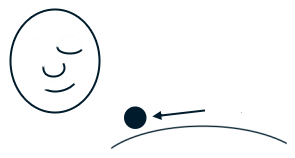
Let the movement be soft and comfortable. Relax your jaw and forehead. Not napravite left eye. The movement will improve by itself.
6. Still act only with the left eye. Visualize that ball slowly moving to the right and back to center. Close your eyes and follow the ball with your eyes.

Proceed very slowly. Focus on a pleasant lightness sensation.
7. Finally, imagine that the ball moves slowly left, then right. Also with closed eyes follow the ball (this time both eyes).

Do you feel that the eyes now move more smoothly?
8. Now do a series of movements in near/far vision. Imagine the ball is on the horizon in the distance. In your imagination follow the ball with his eyes, when he will gradually become closer, until, until it stops just a few inches from your face. Then again imagine how the bead is removed on to the horizon. After every few movements pause.
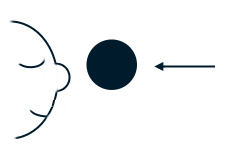
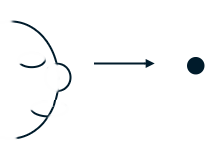
Note that in some States it's easier to imagine the ball than others. Sometimes the ball can become defocused or disappear. Slow execution of movement will help to gradually balance the movement of the eye.
9. Now imagine that the ball moves along the horizon to the right and stops at the rightmost point. Then watch as the ball moves closer to your face until it becomes large and gently touches your cheeks. Then imagine the reverse movement. Check out, tense your eyes, face, muscles around the mouth, shoulders and neck.
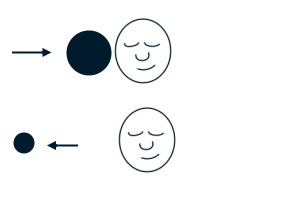
Do not strain the eyes. Move pleasant and easy. Try to mentally stop the ball in different positions between the extreme points, so that the focus was also clear.
10. Similarly, try to perform these movements with the left hand, the ball slowly coming to your face, increasing in size, and then gently stops the cheek.
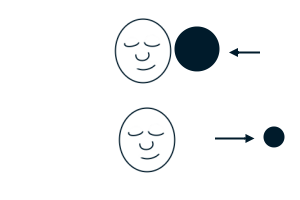
After executing the lesson, feel the difference in sensation your eyes. published
P. S. And remember, only by changing their consumption — together we change the world! ©
Source: feldy.ru/lessons/feldenkrais_dlya_glaz/
In order to maintain healthy vision, our eyes must use all possible range: from near to far, however, in today's world most of the time we focusareas on objects located up close, for example, we use near vision when reading, watching television, using computer monitors and working with technology. The predominant use of close vision is one of the main causes of chronic eye strain, neck, shoulders and back.

The following simple exercise will help you to understand the tension and will reduce eye strain. Since there is a close relationship between eye strain, the tone of the neck muscles and condition your entire body, you will soon make sure that the relaxation of the eyes is also accompanied by the release of tension from the face, neck and shoulders.
The following movements can be performed sitting or lying down. Basic guidelines to follow:do not rush, every action carefully to do (need to do small and light), try to relax and after each movement to relax a bit. Better to do this lesson reading about one movement at a time and then performing it with your eyes closed. Or ask someone to read the text for you. If you wear lenses or glasses, remove them before the lesson.
1. Close your eyes. Imagine that you see a round ball in the distance on the horizon in front of you. Select color and bulb size. It will look something like this:

2. Imagine the ball very slowly moved slightly to the right and then left along the horizon. Close your eyes and move your eyes from side to side, following the ball in your imagination. Repeat each movement 4-8 times

Do not strain the eyes. Move your eyes very slowly. Each movement must be small and light. Breathe freely. Your eyes are likely to move unevenly. The ball seems to be to jump or you can keep an eye on it from time to time.
3. Now move your attention only on the right eye. Imagine the ball slowly moves to the right and back into the middle along the horizon. Close your eyes and in your imagination, follow right eye for the ball.

Pay attention only to the right eye. Do the move do not end up relaxed and comfortable. Stop straining your eyes too much when moving it to the right. If at some points the movement of the eye is uneven, move slower. Relax your face, neck and shoulders.
4. Please note only in the right eye. Visualize how the ball is now moving left and back to the center along the horizon. Close your eyes and follow the ball with your right eye.

Use the least possible effort. Does the ball disappears sometimes? So the ball was moving smoothly, move your eye slowly. Breathe freely. Pause to relax in after a few movements. Relax and relax your eyes. Feel the difference between your left and right eye.
5. Now turn attention only to the left eye. Imagine the ball slowly moves left and then back to the center along the horizon. Close your eyes and follow the ball with his left eye.

Let the movement be soft and comfortable. Relax your jaw and forehead. Not napravite left eye. The movement will improve by itself.
6. Still act only with the left eye. Visualize that ball slowly moving to the right and back to center. Close your eyes and follow the ball with your eyes.

Proceed very slowly. Focus on a pleasant lightness sensation.
7. Finally, imagine that the ball moves slowly left, then right. Also with closed eyes follow the ball (this time both eyes).

Do you feel that the eyes now move more smoothly?
8. Now do a series of movements in near/far vision. Imagine the ball is on the horizon in the distance. In your imagination follow the ball with his eyes, when he will gradually become closer, until, until it stops just a few inches from your face. Then again imagine how the bead is removed on to the horizon. After every few movements pause.


Note that in some States it's easier to imagine the ball than others. Sometimes the ball can become defocused or disappear. Slow execution of movement will help to gradually balance the movement of the eye.
9. Now imagine that the ball moves along the horizon to the right and stops at the rightmost point. Then watch as the ball moves closer to your face until it becomes large and gently touches your cheeks. Then imagine the reverse movement. Check out, tense your eyes, face, muscles around the mouth, shoulders and neck.

Do not strain the eyes. Move pleasant and easy. Try to mentally stop the ball in different positions between the extreme points, so that the focus was also clear.
10. Similarly, try to perform these movements with the left hand, the ball slowly coming to your face, increasing in size, and then gently stops the cheek.

After executing the lesson, feel the difference in sensation your eyes. published
P. S. And remember, only by changing their consumption — together we change the world! ©
Source: feldy.ru/lessons/feldenkrais_dlya_glaz/
5 love languages: Learn which of them says your second half
A delicious pate of avocado: 3 delightful recipe

